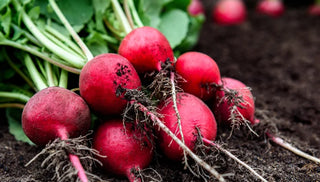For most gardeners, spring never comes soon enough. I'm not a patient person to start with, and waiting until May to get out in my garden is torture. So let's not wait. Here are five things to do right now that will get you and your garden into spring-mode.
- Start some seeds indoors.
- By starting a few annuals and perennials from seed, you'll have lots of big, healthy transplants ready for the garden when the weather warms up. Planting seeds indoors lets you get your hands (a little) dirty and experience some of the pleasures of spring without leaving the house. For inspiration, take a look at our lineup of seedstarting products.
- Search out cold-tolerant varieties
- Selecting the best plant varieties for spring can make a significant difference in early-season production. There are some varieties of broccoli, for instance, that thrive in cold spring soils, but go to seed quickly once warm weather arrives. There are other varieties that will tolerate heat, and still others that thrive in the low-light conditions and cold temperatures of late fall. You can find descriptions of heat- and cold-tolerant varieties in most seed catalogs.
- Identify and take advantage of microclimates
- Even if your yard is very small, growing conditions probably vary quite a bit from one area to the next. A variety of factors, including sun, soil and wind exposure will make some parts of your yard warmer than others. An early spring garden will be most successful if you locate it in an area that is particularly well-drained, gets plenty of sunshine and is protected from cold winds.
- Pre-warm the soil
- Cold soil temperatures can slow the growth of young plants even more so than cold air. Cold soil inhibits root growth and prevents the uptake of certain nutrients. Covering soil with black plastic can help boost temperatures by several degrees. The plastic can be left on all season, or be removed prior to planting. Heavy, water-logged soils take longer to warm up than lighter, more well-drained soils. Raised beds are a good way to help warm spring soils more quickly.
- Cover your plants
- A growing environment that's sheltered from wind, frost and intense sunlight will speed plant growth and minimize stress. When transplanting seedlings out into the garden, it's a good idea to protect them with garden fabric (row covers), cloches or a cold frame for the first couple of weeks. Seedlings grown under shelter will often put on twice as much growth as uncovered plants. All-Purpose Garden Fabric is made of spun polyester or polypropylene and is sun-, air-, and water-permeable, which means excess heat can escape and rainwater can pass through. In cold weather, this mid-weight fabric will protect to 28 degrees F. A thicker type of fabric, the GardenQuilt, can protect plants to temperatures as low as 24 degrees F. Individual plants can also be protected with cloches or teepees, or pop-up protectors which provide a temporary protected growing environment.




